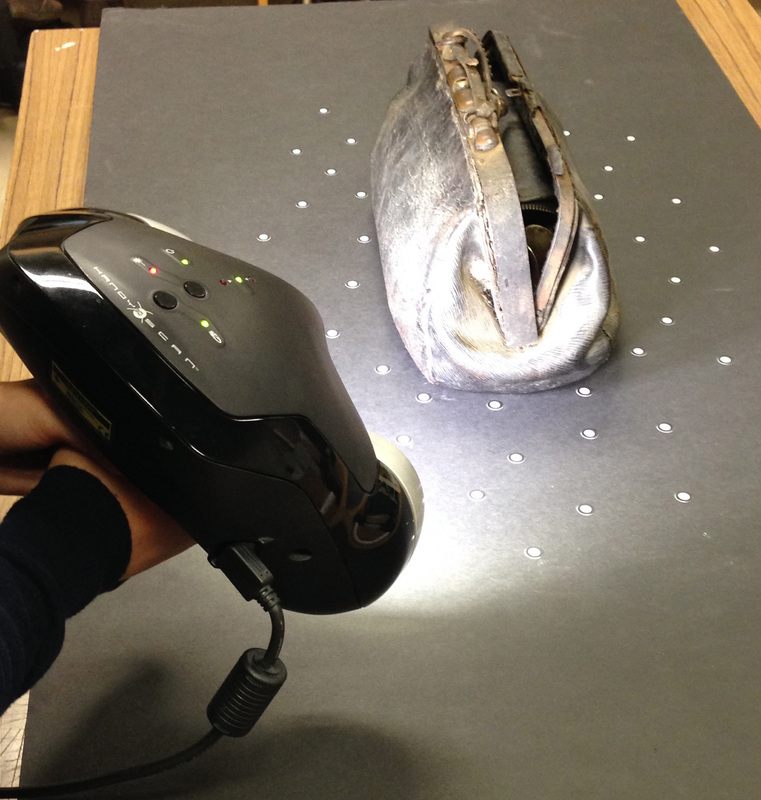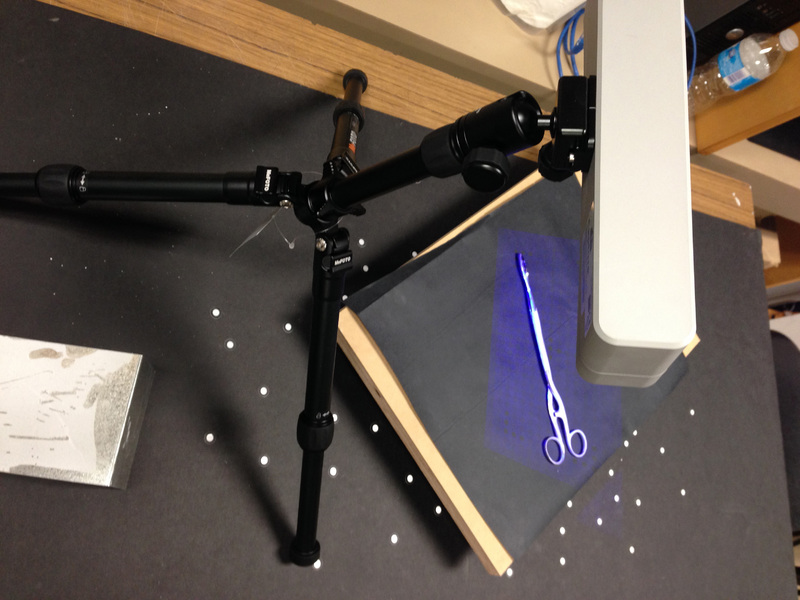3D images were created of several of the instruments in the vet kit that belonged to Harry Colebourn. 3D scanning equipment and expertise was borrowed from Ryerson University’s Department of Architectural Science to create the images. Without this prior expertise, this portion of the project would not have been possible. Initially we had thought that we might be able to make scans of all the items, but it quickly became apparent that scanning even one object would take considerably longer than we had anticipated. We scaled the project back to a representative sample of instruments from the vet kit and the vet bag itself.
The Ryerson Department of Architectural Science has several scanning configurations. Two of these were used in this project.

Scanning with handheld scanner
Initially a hand-held Creaform Handyscan VIUscan scanner was used. Scans were processed with CREAFORM – VXelements and then edited in GeoMagic Design X. The digital image was created using triangulation techniques.
This set up proved to be problematic and scanning was time consuming. For this type of scanning the object needed to remain in the same position during the entire scanning process. This was difficult due to the insurance requirements of the artifacts that required that the objects be returned each night to a locked location. The scanner also proved to be very heavy to hold and manipulate for the amount of scanning required. The first scans that were made produced very large files that were not handled well by the software.
Once it was determined that the initial scanning configuration was not ideal, a switch was made to a GeoMagic Capture scanner mounted on a tripod which scans directly into the GeoMagic software. The object was placed on a “lazy susan” beneath the scanner and several separate scans made of the object from different angles. In this instance a light pattern was projected onto the object and measurements taken by two cameras in the scanner. Scanning using this method was much quicker and required little intervention apart from repositioning of the lazy susan. With both methods, considerable post-scanning work was required.

Scanning with tripod-mounted scanner